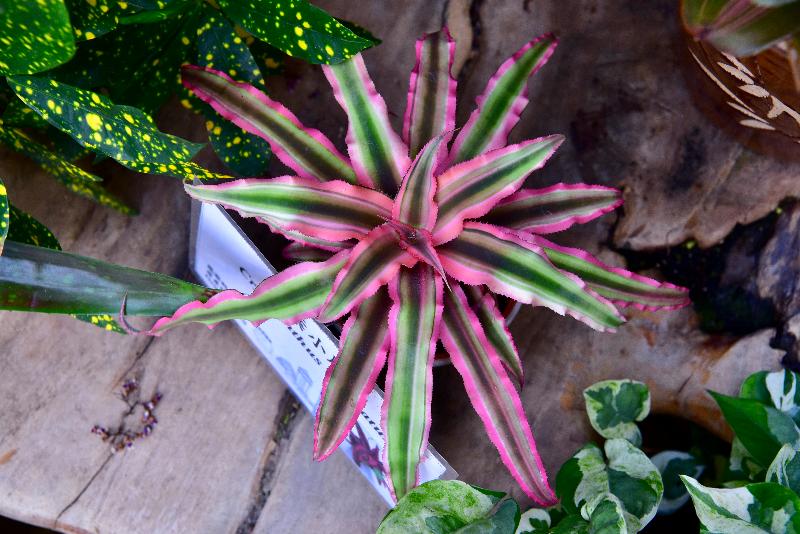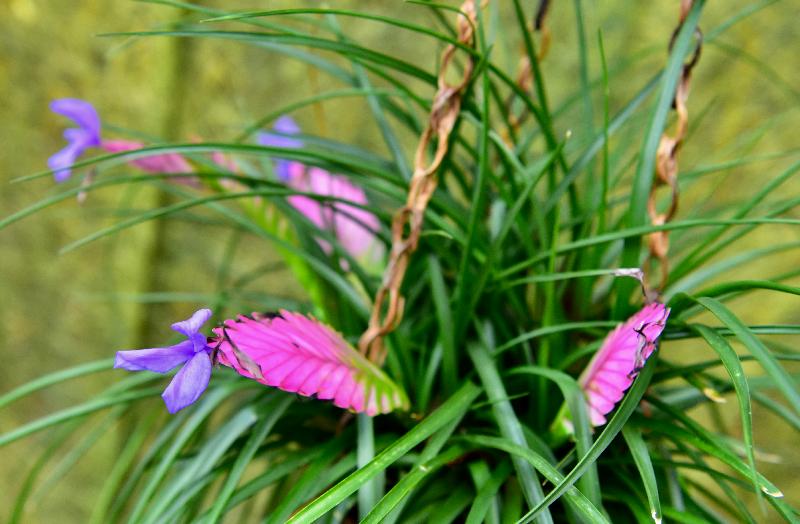Bromeliads to go on display at Hong Kong Park (with photos)
***********************************************************
With about 2 600 species, bromeliads are mainly distributed over tropical and warm temperate America and classified into three categories according to their growth habits - terrestrial bromeliads, tank bromeliads and atmospheric bromeliads. A rich variety of about 500 bromeliads will be showcased at the upcoming thematic exhibition, including Cryptanthus bivittatus, Neoregelia spp, Tillandsia usneoides and Tillandsia cyanea.
Cryptanthus bivittatus is a terrestrial bromeliad. These plants are commonly known as Earth Stars because of their foliage shape. With undulated margins and silver-grey scales on the underside, their leaves are velvety to the touch.
Neoregelia spp is one of the tank bromeliads, typically with dense foliage that grows in a rosette shape, forming a funnel for retaining water and nutrients.
Atmospheric bromeliads, including Tillandsia usneoides and Tillandsia cyanea, have roots that mainly provide anchorage to trees or other objects. The plants get nutrients and water from the air through their leaf trichomes. Tillandsia usneoides are often found attached to or hanging from tree trunks or rocks in their native habitats. Both stems and leaves are densely covered with silvery-grey scales, which help reflect scorching sunlight and prevent damage to the leaves. Tillandsia cyanea bears linear leaves and is attractive in its violet-blue colour.
In addition to the presentation of over 50 species of bromeliads, display boards will also be set up to introduce their characteristics and cultivation methods. Park-goers are invited to visit the exhibition, which will be open to the public free of charge from 9am to 5pm daily from December 1 to January 13, 2019 at the Display Plant House of the Forsgate Conservatory of Hong Kong Park, 19 Cotton Tree Drive, Central.
To further enhance public understanding of bromeliads, two sessions of guided tours will be held at 11am and 3pm every Sunday from December 2 to January 13 next year. Each tour will last for an hour.
For details, please browse the LCSD website.
Ends/Monday, November 26, 2018
Issued at HKT 14:00
Issued at HKT 14:00
NNNN








